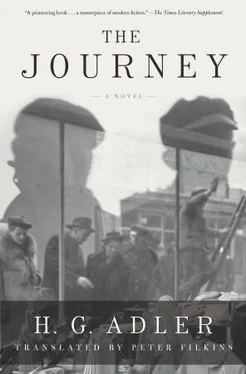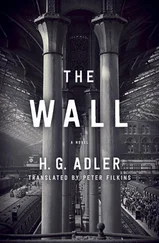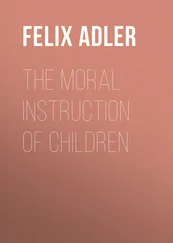But what of the Lustig family and their individual plight? How are we meant to follow their story while Adler mouths the many voices of the diseased society that surrounds them? The answer is that, in a certain way, their absence from the novel is also a kind of presence. When Adler explores the complex and interwoven relations between the citizens, victims, commanders, officials, and henchmen, our longing, in diminished form, is for the simple human reality of the Lustigs, which they must have longed for themselves. When Adler returns to their story, balance and clarity return to the narrative, though he is also careful to allow this to happen only in the most unreal of circumstances. This way the Lustigs are granted a certain dignity in the handling of their own plight, rather than their circumstances constantly controlling them, however much they are unable to overcome them in the end. Leopold Lustig, for example, may be interned, but he is not a prisoner. He is indeed stripped of his license to practice medicine, but he cannot be stripped of his ability to think and reflect. On the other hand, Leopold’s presence is passive, interior, largely unspoken, and largely unknown to those around him. Adler’s mission is to make visible the invisible, to excavate that which has been buried, in this case literally. The result is that both Leopold and Adler reach a surprising, if not paradoxical, denouement when Leopold both asserts his own sense of dwelling within this place while also recognizing the forces that have condemned him to it.
Leopold dies in Ruhenthal; Caroline, Ida, and Zerlina pass into the darkness of the death camps; only Paul lives to return. His will be the consciousness, however, that preserves the thought and memory of them, while Adler’s own duty is to construct the complex means by which to convey but the slightest glimmer of their being. Adler’s own memory of course provided the fuel for the white heat of his tale’s content, but it is the cool hand of the artist, Joyce’s Stephen Dedalus paring his fingernails while gazing on at the outrage of history, that forges his tale in modernist fashion.
Indeed, if this Leopold reminds us of another Leopold lost in the labyrinth of Joyce’s Dublin, the deeper irony is that Theresienstadt is a labyrinth leading to quintessential negation rather than the climactic affirmation of Ulysses . At the same time, one would be remiss not to acknowledge the symbolic linkage between Leopold Lustig and Leo Baeck, the spiritual leader of Germany’s Jews, who was also interned at Theresienstadt and who also worked on the garbage detail there. Fortunately, Leo Baeck did not die, but survived the war to, among many other things, preserve Adler’s voluminous notes on Theresienstadt, which Adler then retrieved after his liberation from Langenstein. Hence, Leopold’s fictional death and disappearance among the refuse is countered in real life by Adler’s mining of the factual detritus through the assistance of Leo Baeck’s act of preservation. That Adler then uses the “refuse” of his experience to create vivid factual and fictional renderings of it is his triumph.
“So what is literature good for?” asks W. G. Sebald in the last essay he wrote, just weeks before his death, a talk titled “An Attempt at Restitution,”* which he delivered at the opening of the Literaturhaus in Stuttgart. Answering this question with a question that Hölderlin asked himself, Sebald inquires, “Am I … to fare like the thousands who in their springtime days lived in both foreboding and love, but were seized by avenging Fates on a drunken day, secretly and silently betrayed, to do penance in the dark of an all too sober realm where wild confusion prevails in the treacherous light, where they count slow time in frost and drought, and man still praises immortality in sighs alone[?]” This, in fact, is Adler’s question, and the conclusion Sebald reaches also seems pertinent: “The synoptic view across the barrier of death presented by the poet in these lines is both overshadowed and illuminated, however, by the memory of those to whom the greatest injustice was done. There are many forms of writing; only in literature, however, can there be an attempt at restitution over and above the mere recital of facts and over and above scholarship.”
Adler’s approach in The Journey is ideally suited to transposing Hölderlin’s “synoptic view across the barrier of death,” thus rising to the standard that Sebald seeks. Through the figurative use of the Lustig family as a stand-in for those who lived, suffered, and died in Theresienstadt, as well as the arch use of the “rubbish heap” and the so-called heroes who watch over the prisoners and sadistically invoke the “forbidden,” Adler provides a symbolic frame for the misery inherent to his experience, along with an artistic approach that constantly keeps us off balance as readers as we try to appreciate that experience. Adler accomplishes this by asking us to see beyond his metonyms in order to imagine the experience they represent for ourselves. In this way, Adler’s work is both about Theresienstadt and not about it at the same time. Indeed, in some essential way it can never be about the misery endured there, but instead about the imperative for the imagination to attempt to imagine the unimaginable, be it Theresienstadt, Auschwitz, Rwanda, Srebrenica, Darfur, or the next mindless atrocity destined to cross our television screens as we look on, helpless and aghast.
Vitriolic, yet possessed of discipline and artistry; tender, yet refusing self-pity; accusatory, yet knowing the dignity of compassion and forgiveness, The Journey is Adler’s attempt not at restitution, perhaps, but at the restoration of memory through the fluidity of consciousness evoked through language rather than the fixed edifice of a monument. Only within the music of our consciousness do we connect and reconnect, harken and repeat the disparate elements of our lives, and literature remains the deepest evocation of that process. Through this act of preservation H. G. Adler becomes an “entity capable of remembering itself,” as the journey “arrives at a sense of peace.” Die Reise is the tale of that journey and the apex of Adler’s art.
Peter Filkins
December 15, 2007
* For a discussion of Adler and Adorno, see Jeremy Adler, “The One Who Got Away” in The Times Literary Supplement , October 4, 1996.
* Quoted from Norbert Troller’s introduction to his book Theresienstadt: Hitler’s Gift to the Jews , translated by Susan E. Cernyak-Spatz (Chapel Hill: Univeristy of North Carolina Press, 1991).
* Collected in Campo Santo , edited by Sven Meyer and translated by Anthea Bell (London: Hamish Hamilton, 2005).
For Elias and Veza Canetti
DRIVEN FORTH, CERTAINLY, YET WITHOUT UNDERSTANDING, MAN IS SUBJECTED to a fate that at one point appears to consist of misery, at another of happiness, then perhaps something else; but in the end everything is drowned in a boundlessness that tolerates no limit, against which, as many have said, any assertion is a rarity, an island in a measureless ocean. Therefore there is no cause for grief. Also, it’s best not to seek out too many opinions, because, by linking delusions and fears to which we are addicted, strong views keep you constantly drawn to what does not exist, or even if it did, would seem prohibited. So you find yourself inclined to agree with this or that notion, the emptiness of a sensible or blindly followed bit of wisdom, until you finally become aware of how unfathomable any view is, and that one is wise to quietly refrain from getting too involved with the struggles to salvage anything from the rubbish heap, life’s course demanding this of us already.
Читать дальше












